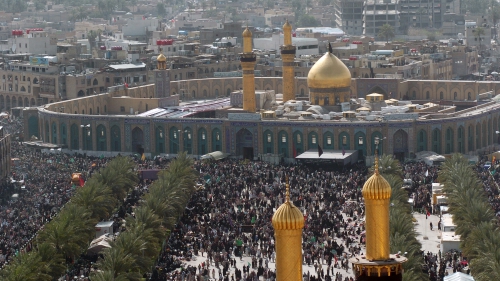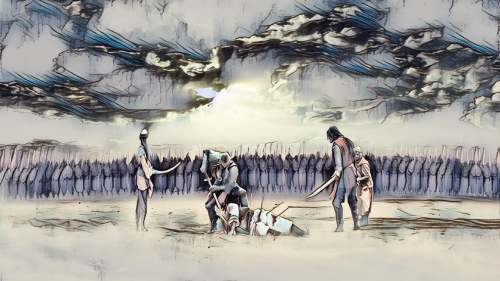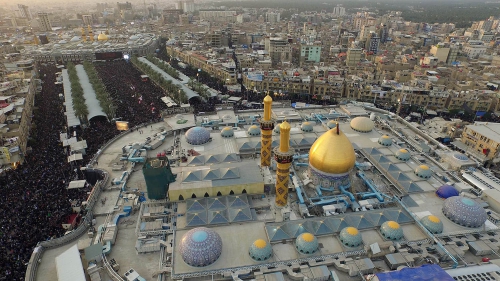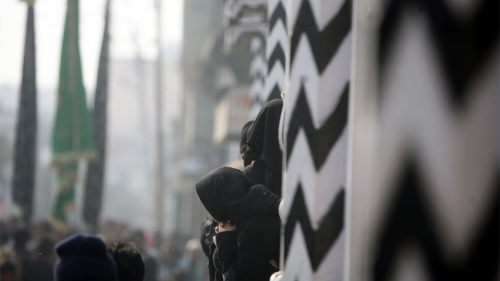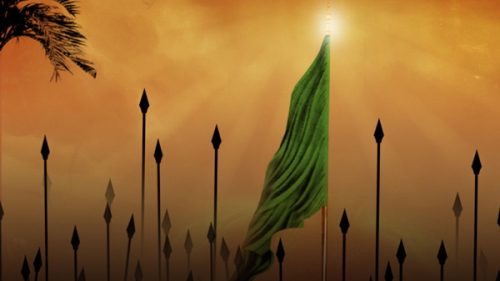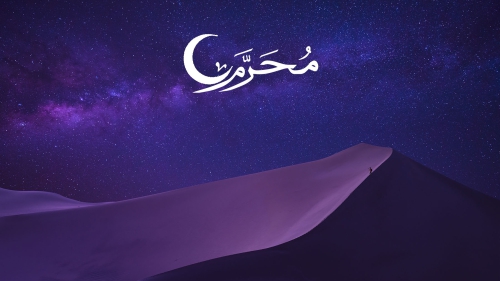Will Arabs help Jews rebuild an Inner Virtual Jerusalem Temple?
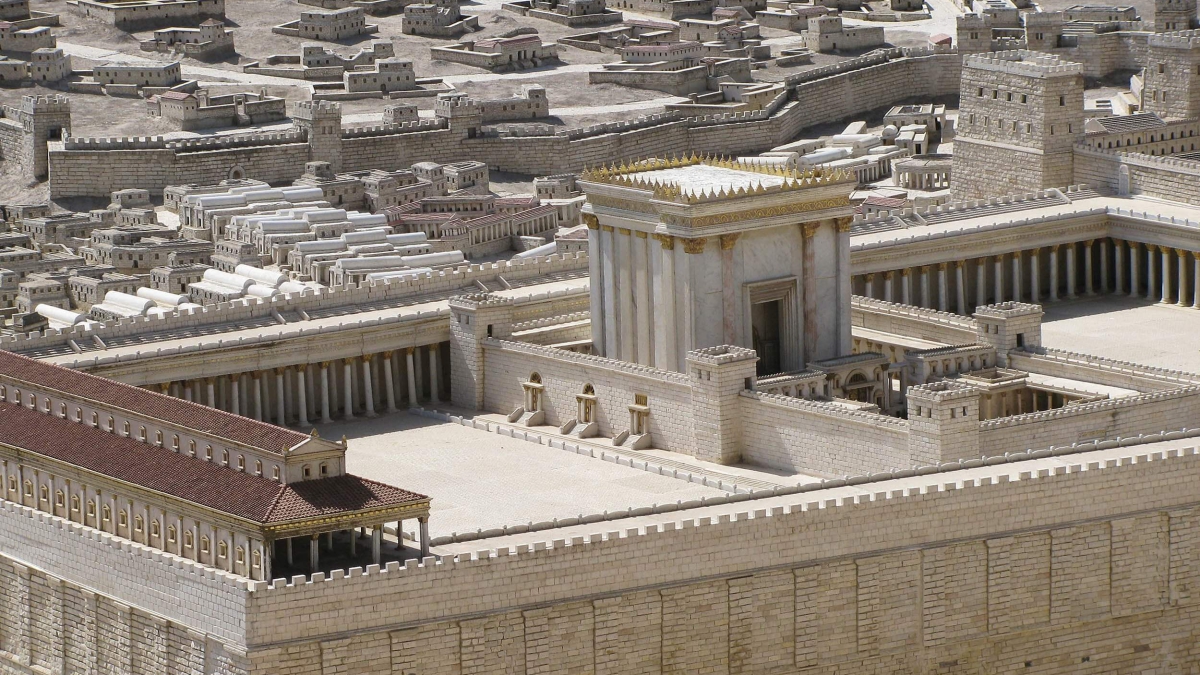
A few days ago Jews and Shia Muslims both observed a period of mourning for a tragic historical event that happened many centuries ago. Now it is time to look forward to avoiding such a future tragic event. Thus I wrote the following article for Israelis and Palestinians.
Will Arabs help Jews rebuild an Inner Virtual Jerusalem Temple? August 11, 2022, 3:09 PM
Now that Tisha b’Av is over, unOrthodox and Orthodox Jews should turn from mourning the past, to envisioning the future, by working on how to build a Virtual Reality Inner Sanctuary on the Temple Mount next to the Dome of the Rock.
For more than seven decades, political nationalist leaders in Israel and Palestine have failed to find a way to end the conflict between their two peoples. Perhaps it is time for religious leaders who understand the religious importance of repentance, humility, forgiveness, compromise and hope for peace in overcoming seven decades of pain and anger. As the Qur’an states: “Perhaps Allah will put, between you and those to whom you have been enemies among them, affection. And Allah is competent, and Allah is Forgiving and Merciful.” (60:7)
Islam has legalized compromise in this regard, to make people unite and prevent division. The Prophet said: “I do not regard (it as) a lie when a person tries to reconcile between people by saying something not intending what was understood, (whether to) reconcile between people, at times of war, or a husband or wife in order to please their spouse.” [Abu Dawood]
Islam also regards reconciling people as worthy of a great reward, better than the reward of prayer, fasting, and other obligatory acts of worship. The Prophet said: “Shall I not inform you of a level even better than the Fast, the Prayer, and charity? Reconciling between people, for indeed disunity between people is what uproots religion.” [Abu Dawood & at-Tirmidhi]
The Prophet also said: “He is not a liar… who seeks to reconcile between people by saying good things about them.” [al-Bukhari]
The classical rabbinic exegetical text Pirkei deRabbi Eliezer which is attributed to the first century Jewish sage, Rabbi Ishmael ben Elisha, contains references which prophesied the rebuilding of the Jerusalem Temple not just by Jews; but also by bnei Yishmael, (the sons of Ishmael).
The Pirkei deRabbi Eliezer final chapter 30, lists 15 things that the sons of Prophet Ishmael will do in the holy land at the End of Days, and one is particularly interesting: “Hamishsha ‘ashar devarim ‘atidin bney Yishmael la’asot be eretz be acharit hay-yamim…Veyegederu peretsot chumot beyt hamiqdash veyibenu banin biheykal-“Rabbi Ishmael said: The sons of Ishmael will do fifteen things at the end of days…. They will rebuild the breaches in the wall of the beyt hamikdash (Al Aqsa or bayt al maqdis) and build a building in the heiykal (the central sanctuary of the Holy Temple)”
This building of a heiykal (the central sanctuary of the Holy Temple)” could be, in the near future, a virtual reality broadcast from a small physical building on open space near the Dome of the Rock. Just as millions of Muslims can daily join tens of thousands of Muslims of pilgrims praying and circling around the cube-shaped Kaaba at Islam’s most sacred site; Jews would be able to strap on a headset and enter the holy city of Jerusalem, and hear the sounds of Jewish prayers at the Western Wall, and someday as broadcast from the virtual Jerusalem Temple without ever leaving their own homes.
Worshipers, tourists and visitors from around the world are increasingly joining virtual reality religious activities and pilgrimages to some of Earth’s most sacred sites. Such experiences are among the many evolving spaces in the meta-verse, an immersive virtual world where people can connect via avatars, that have grown in popularity during the pandemic.
Using a 360-degree camera, a lidar scanner and his training as a photojournalist, Nimrod Shanit in 2015 began to capture videos and photos of Christian, Islamic and Jewish religious festivals and holy sites in his native Jerusalem. He then stitched the footage and images together digitally to create a visually immersive experience.
The Sons of Ishmael refer to the Arabs in the Book of Genesis, and also in Islamic traditions. Arab Muslims see themselves as the progeny of Prophet Ishmael. Considering the 500 years+ gap between the era of Rabbi Ishmael and the Islamic era of Prophet Muhammad, I find this passage astonishing.
Could the return of the Jewish People, and the rebuilding of the third Temple in Jerusalem, have started to be fulfilled by Caliph Umar ibn Khatab in 638 CE, by the building of a sanctuary for Muslims, south of the Temple Mount, known as Masjid Al Aqsa or bayt al maqdis?
Of course Jews do not recognize this possibility because some of the writings in Pirkei deRabbi Eliezer were composed around the beginning of the 8th century CE and not the 1st century. But I find the idea that bnei Yishmael, the Arab Muslims, could actually help rebuilt the third Temple fascinating. This politically impossible motivation might be accomplished by the religious reality of an ancient, and recent vision.
The following fable, transmitted orally in both Arabic and Hebrew for many centuries and finally written down in several different versions in the 19th century, illustrates how two holy places, one in Mecca and the other in Jerusalem, can be closely connected even though they are geographically separated by 765 miles. Some say this happened in the age of Noah, and others say in the generation when Abraham was born.
Two brothers who inherited a ‘valley to hilltop’ farm from their father divided the land in half so that each one could farm his own section. Over time, the older brother married and had four children, while the younger brother was still not married.
One year there was very little rain, and the crop was very meager. This was at the beginning of a long-term drought that would turn the whole valley into an arid, treeless, desert where even grain did not grow, and all the springs dried up.
The younger brother lay awake one night praying and thought: “My brother has a wife and four children to feed, and I have no children. He needs more grain than I do, especially now when grain is scarce.”
So that night, the younger brother went to his barn, gathered a large sack of wheat, and left his wheat in his brother’s barn. Then he returned home.
Earlier that very same night, the older brother was also lying awake praying for rain when he thought: “In my old age, my wife and I will have our grown children to take care of us, as well as grandchildren to enjoy, while my brother may have no children. He should at least sell more grain from his fields now, so he can provide for himself in his old age."
So that night, the older brother also gathered a large sack of wheat, and left it in his brother’s barn, and returned home, feeling pleased with himself. The next morning, the younger brother, surprised to see that the amount of grain in his barn seemed unchanged, said “I did not take as much wheat as I thought. Tonight I’ll take more.”
That same morning, the older brother, standing in his barn, was thinking the same thoughts. After night fell, each brother gathered a greater amount of wheat from his barn and in the dark, secretly delivered it to his brother’s barn.
The next morning, the brothers were again puzzled and perplexed. “How can I be mistaken?” each one thought. “There’s the same amount of grain here as there was before. This is impossible! Tonight I’ll make no mistake—I’ll take two large sacks.”
The third night, more determined than ever, each brother gathered two large sacks of wheat from his barn, loaded them onto a cart, and slowly pulled his cart toward his brother’s barn. In the moonlight, each brother noticed a figure in the distance.
When the two brothers got closer, each recognized the form of the other and the load he was pulling, and they both realized what had happened!
Without a word, they dropped the ropes of their carts, ran to each other and embraced.
Only God can make anything holy, and God thought the brothers’ love and concern for each other made their descendants worthy to rebuild a primordial Holy House in this valley; and later to build a new Holy House on that hill. So God sent Messengers to their descendants to guide them to do this.
When all those, both near and far, who revere these sacred places as a standard, share it in love with everyone else who reveres it, then Abraham’s request for Allah to “Make this a land of peace, and provide its people with the produce of the land” [Surat Al- Baqarah, 2:126] will be extended throughout the world; and all the children of Adam, Noah and Abraham will live in Holiness, Peace and Prosperity.
Christians and Jews believe the hill is Jerusalem. Muslims believe the valley is Mecca.
I believe they are both right and God willing, someday everyone may see both cities and their sanctuaries as a pair of lungs; that are central to our spiritual inspiration by, and connection to, the One God of Abraham, Ishmael and Isaac. As the Qur’an states: “’Believers, be steadfast in the cause of God and bear witness with justice. Do not let your enmity for others turn you away from justice. Deal justly; that is nearer to being God-fearing.” (Qur’an 5:8)
The First Temple was built by Prophet and King Solomon the son of Prophet and King David, in the 10th century B.C.E. and lasted until 586 B.C.E when it was destroyed by the Babylonians.
The Second Temple was rebuilt by the Persian Jewish Governor Nehemiah, who is not mentioned by name in the Qur’an, but may be referred to in Surah 2:259; “Or are you not aware of˺ the one who passed by a city which was in ruins. He wondered, “How could Allah bring this (city back to life after its destruction?” So Allah caused him to die for a hundred years, then brought him back to life. Allah asked, “How long have you remained ˹in this state˺?” He replied, “Perhaps a day or part of a day.” Allah said, “No! You have remained here for a hundred years! Just look at your food and drink—they have not spoiled."
˹But now˺ look at ˹the remains of˺ your donkey! And ˹so˺ We have made you into a sign for humanity.” And look at the bones ˹of the donkey, how We bring them together then clothe them with flesh!” (a reference to Ezekiel 37:1-11 vision of the dry bones and the forthcoming Jewish revival). “When this was made clear to him (Nehemiah) he declared, “˹Now˺ I know that Allah is Most Capable of everything.”
Five centuries after Nehemiah, a greatly expanded Temple was rebuilt by King Herod, a descendant of Esau the grandson of Prophet Abraham, It lasted until the soon to become Roman Emperor Titus destroyed the Jerusalem Temple in 70 CE.
A part of the Third Temple was rebuilt by the caliph Umar ibn Khatab, who himself was a bnei Yishmael (son of Ishmael) from the Quraish tribe descendant of Qedar bin Ismā’īl (Ishmael) binʾIbrāhīm (Avraham) in 692 C.E.: and it will remain there until the other part of the Third Temple will be rebuilt jointly by an Israeli-Palestian partnership.
Based on the text in Pirkei deRabbi Eliezer פרקי דרבי אליעזר published by Eshkol J. Weinfeld: there are 15 prophecies, of which the last five are:
11) they shall build the ruined cities
12) the roads will be cleared (by them)
13) they will plant gardens and orchards
14) they will rebuild the breaches in the wall of the beyt hamikdash and
15) they will build a building inside the heiykal (the inner sanctuary of the Holy Temple).
The Jews have already rebuilt the ruined cities; cleared the roads; and planted gardens and orchards by themselves, but the last two; rebuilding the breaches in the wall of the beyt hamikdash and building a virtual reality inner structure in the heiykal (the inner sanctuary of the much larger Holy Temple) cannot be done without the co-operation of the Israeli Arabs and Arab Palestinians.
Recognizing each other’s suffering is an important step toward reconciliation. This must not come at the expense of negating one’s self or one’s own tragedy for the sake of recognizing the other. It is in this moment, when we recognize the other’s suffering, and they recognize ours, that two conflicting sides can work toward reconciliation.
But if they lead only to each ones One Truth; and not to Love and Compassion, Humility, Peacemaking and Righteousness; then they lead to a narrow minded fanaticism that takes God’s holy name and profanes it, desecrates it, and denies it.
The Qur’an refers to Prophet Abraham as a community or a nation: “Abraham was a nation/community [Ummah]; dutiful to God, a monotheist [hanif], not one of the polytheists.” (16:120) If Prophet Abraham is an Ummah then fighting between the descendants of Prophets Ishmael and Isaac is a civil war and should always be avoided.
If all Arabs and Jews can live up to the ideal that ‘the descendants of Abraham’s sons should never make war against each other’ is the will of God; we will help fulfill the 2700 year old vision of Prophet Isaiah: “In that day there will be a highway from Egypt to Assyria. The Assyrians will go to Egypt, and the Egyptians to Assyria. The Egyptians and Assyrians will worship together. In that day Israel will join a three-party alliance with Egypt and Assyria, a blessing upon the heart. The LORD of Hosts will bless them saying, “Blessed be Egypt My people, Assyria My handiwork, and Israel My inheritance.”… (Isaiah 19:23-5)






